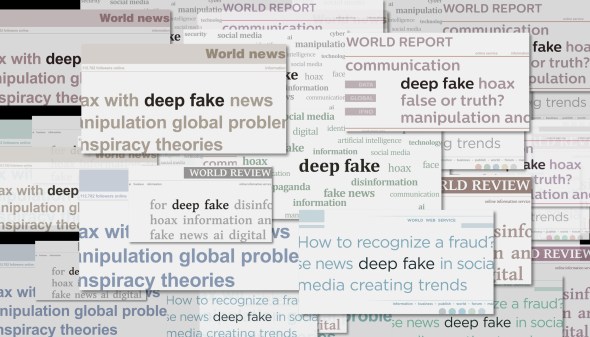John Brennan’s [r]evolutionary plan for the CIA
CIA Director John Brennan has a lot to worry about. One of his biggest concerns during the past year has been trying to avoid the fate of Kodak and Blockbuster — two industry giants that failed to recognize how technology changed the fundamental nature of their businesses and lost their market prominence.
For the CIA, however, the stakes are much higher. If the agency fails to adapt to emerging technologies, it runs the risk of being unable to prevent major regional upheavals, the nation’s military adversaries may be able to operate with impunity and it will be more difficult for American spies to remain hidden in dangerous places.
It is for all of these reasons that Brennan has embarked upon the largest reorganization of the CIA in its 68-year history. Announced in March, the restructuring took its first formal step April 30 with the naming of 10 new assistant directors to lead six new regional mission centers and four functional mission centers. Each center will be staffed by a mix of the CIA specialists — analysts, clandestine service operators, science and technology specialists, and support staff.
But for the first time in 50 years, the agency has created a new directorate. The Digital Innovation Directorate will form a central component of the new mission center organizational concept. This new fifth directorate will be responsible for integrating the emerging digital environment, from social media to big data analytics and cybersecurity, into each intelligence tasking.
“They need to make sure that as we address issues in Africa, we are bringing to bear the digital expertise and capability that we need in order to carry out that mission in Africa or Asia or against the counterterrorism target,” Brennan said April 28 at a leadership dinner sponsored by the Intelligence and National Security Alliance. “In those centers, you’re going to have the best of CIA. You’re going to be able to bring to bear all of those capabilities in an integrated fashion.”
Almost as soon as Brennan started circulating the idea of an organizational change, many career CIA officers began asking him what part of the agency he thought was broken and needed to be fixed.
“And I told them, ‘I think that’s exactly the wrong question to ask’,” Brennan said. “I’m sure that’s the question that Kodak and Blockbuster asked themselves.”
That’s when he appointed nine senior agency officials to carry out a 90-day study, including a survey of thousands of employees covering all aspects of CIA organization and operations. The resulting recommendations fell into four major lines of effort, including workforce development, business practice reform, restructuring into focused mission centers and establishing a new directorate for digital innovation.

CIA Director John Brennan speaking April 28 at a leadership dinner sponsored by the Intelligence and National Security Alliance. (INSA)
Enter the millennials
Central to all of the reorganization efforts currently underway is a new workforce development program to provide a range of experiences for CIA employees so they are exposed to new opportunities and develop a better understanding of the many facets of the intelligence profession. And the newer recruits coming into the agency — part of the so-called millennial generation — are having a major influence on the changes taking place throughout the CIA, according to Brennan.
“The millennials are the ones who are driving a lot of the initiatives and changes that we need to be able to adapt within the intelligence business,” he said. “The individuals who come into the agency today have grown up in the era of technology. Their lives are mobile. And then when they come into the agency they have to check their iPhones, BlackBerrys, whatever else, and [we] say, ‘OK, come into this cocoon.’ We need to make sure we operate the way the rest of the world operates in the 21st century.”
But operating in the new digital environment is far more difficult, especially for those who are sent into harm’s way on covert missions. “Everywhere we go, everything we do, we leave some digital dust,” Brennan said. “And it really is difficult to operate clandestinely, much less covertly, when you’re leaving digital dust in your wake.”
That digital dust also has an impact on the earliest stages of CIA recruitment. Even new employees arrive with digital dust trails of varying sizes, Brennan acknowledged, presenting new challenges to developing, training and retaining clandestine case officers.
Open source focus
Open source intelligence at the CIA has its roots in the Foreign Broadcast Information Service, known as FBIS, which collected and translated massive volumes of open news information from around the world for use by analysts throughout the U.S. government. In 2005, FBIS became what the CIA now calls its Open Source Center.
Today, the OSC is turning its focus to social media. “Social media is such a rich environment. It is exploding with so much information and data, we as intelligence professionals really need to understand how we can leverage that in order to understand what is going on in places like Tunisia or China or other areas,” Brennan said. “We also need to know what’s available in that environment that’s going to help us as far as targeting and collecting those true secrets.”
For years, the CIA has been frustrated by adversaries who have become very adept at denial and deception operations capable of countering the agency’s advantages in satellite reconnaissance and other technical collection means. “But some things now are coming out in social media that our adversaries aren’t even aware of and its exposing them,” Brennan said. “So rather than invest these multibillions of dollars in these high-technical capabilities that have very long lead times, we need to be able to exploit the current environment as quickly as possible. And social media is so rich, it’s growing by leaps and bounds every day.”
But there are significant challenges. The amount of open source data available through public media and social sharing sites is astronomical and growing by the hour. One of the major concerns for the CIA is the ease with which information can be obtained that supports a particular thesis. “We have to understand what is the reliability, the integrity of the data. This is going to be a long effort,” Brennan acknowledged. But it is an absolute necessity, he said.
For example, phenomena like the Arab Spring — a regional transformation set off by the self-immolation of a Tunisian fruit vendor — spread across the region like a wildfire and was largely missed by the CIA.
“Those types of phenomena don’t lend themselves to traditional espionage,” Brennan said. “You’re not going to have insight into what’s going on on the streets if you have a spy in the prime minister’s office, because they may be totally disconnected, as a lot of authoritarian regimes are. We need to have a better sense of what is happening on the street, what are the things that are motivating people, what are the types of sparks that can set aflame the forests in the area? That’s where social media gives you really good insights in ways that you’re not going to be able to get it from a unilateral asset.”
21st century CIA
For the CIA, taking a 21st century approach to intelligence collection is an exercise in radical culture change. But it is a necessary evolution that, in large part, is being driven by the spread of technology around the world.
“We need to be applying the analytic skills, the operational savvy, as well as the digital expertise. Because even in places like Yemen and Syria and Iraq, you see people who are on their phones. They’re using all sorts of mobile devices,” Brennan said.
“Any organization, whether public sector or private sector, needs to be in a process of continuous improvement and adaptation — to the environment, to the challenges and to the opportunities,” he said. “And if CIA is going to rise to that, we need to recognize we need to change organizationally as well as how we think about our work.”




